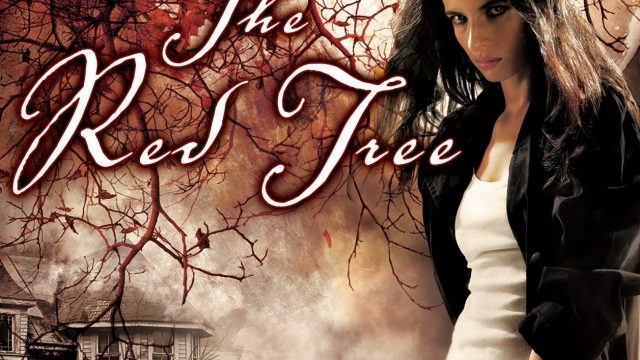Introducing Caitlín R. Kiernan’s The Red Tree feels a little like fictionalizing myself. This is a novel that already comes with a built-in introduction that’s really the hidden start of the book, framing everything that follows as a lightly edited found manuscript, a diary; the diary contains excerpts of another found manuscript, an academic folklore study, and it also pauses at one point to insert a short story. (And, depending on your edition, it all comes with a cover that suggests Sarah’s going to slay some vampries.) Sarah Crowe, the protagonist, diarist, and general Kiernan stand-in–several of the stories Sarah references as her own, like “The Ammonite Violin,” are really Kiernan’s–freely admits to both losses and lapses of memory, and alternates between couching and qualifying her narrative because of it or simply inventing, as writers do, and telling us afterwards that a large chunk of what we just read was, even in her world, pure fiction. In short, it might as well have a blog post wrapped around it … especially one written under a pseudonym.
None of The Red Tree‘s metafictional games are especially new, and Kiernan knows that–in fact, she knows it to the extent that I imagine there are people who dislike the book because of how conscious it is of its genre history. Kiernan cites a lot of the influences in an afterword–everything from House of Leaves to The Great God Pan and “The Willows” to Picnic at Hanging Rock and The Haunting of Hill House–but she also cites a lot of them in the story itself, as Sarah struggles to make sense of what happens to her during the long, hot summer in her rented farmhouse in rural New England. You don’t need to have read or seen everything the novel references–though it would add up to a pretty good library list–and that keeps the book from feeling too esoteric. But the references don’t just function as bullshit in-group signifiers–looking at you, Ready Player One–to bring the reader into some wink-wink-nudge-nudge game where we all see what’s going on here. Kiernan simply makes this reflexive literary contextualizing part of how Sarah thinks, letting her deploy the same tendency from varying motivations.
It’s a constant, though. This is a horror novel by and about someone who sees the world through a filter of art and history, masterpieces and pulp and legends; Kiernan may benefit from this, but we know from the jump that Sarah doesn’t. (It’s another reason why all the intertextual bits aren’t just meaningless cleverness: Kiernan recognizes, over and over again, that cleverness is not enough to save you.) Sarah winds up at Wight Farm and its red tree because she’s running from the all-too-personal story of her lover’s suicide, and in the text, she won’t even give her lover her real name. But she’s bringing her pain to a corner of an already-haunted New England, a place where horror stories accumulate to such a degree that you know, sooner or later, an avalanche is coming.
The Solute Book Club: Easy to join! Read The Red Tree by Caitlín R. Kiernan on your own time and look to the Solute on Wednesday, October 27th for another piece to kick off a discussion in the comments. More details here.

